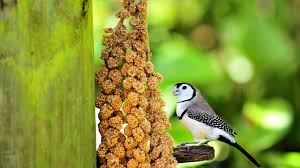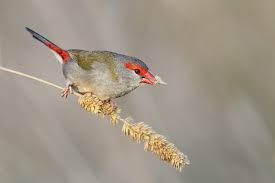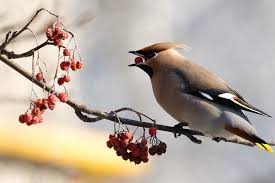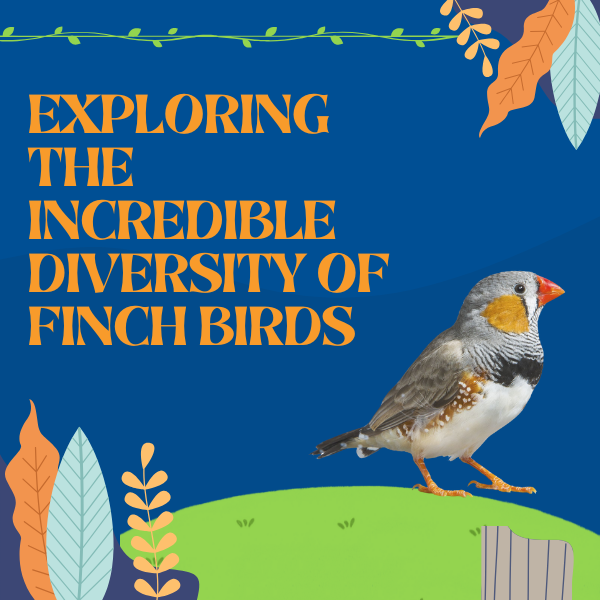Imagine a beautiful morning in a quiet garden, with the sun rising and birds chirping all around. As you sip your coffee, you notice a small bird hopping around the ground, pecking at seeds scattered nearby. This little creature is a seed-eating bird—and you’re about to take a journey into the fascinating world of these tiny but mighty creatures.
Seed-eating birds are everywhere, from city parks to dense forests, and they play a key role in the natural world. These birds are a diverse group with one thing in common: they’ve adapted their bodies and behaviors to thrive on a diet that primarily consists of seeds, nuts, and berries. But beyond their diet, there’s a lot more to these birds than meets the eye.

In this article, we’ll take a deep dive into the lives of seed-eating birds—why they eat seeds, how they’ve adapted to this food source, and what makes them so special in the grand web of life. Along the way, we’ll uncover some surprising facts and explore how seed-eating birds fit into the bigger picture of ecosystems around the world.
What Are Seed-Eating Birds?
Seed-eating birds, as the name suggests, are birds that primarily consume seeds. These birds have evolved to specialize in eating the seeds of plants, which are packed with nutrients like protein, fats, and carbohydrates. This diet may sound simple, but it’s actually incredibly important, and it’s one that has shaped these birds’ evolution in fascinating ways.
There are many different species of seed-eating birds, and they vary in size, shape, and behavior. Some well-known examples include:
- Finches: These small birds, especially the famous Darwin’s finches from the Galápagos Islands, are iconic seed-eaters.
- Sparrows: Many species of sparrows have evolved to feast on seeds, whether it’s from grasses, weeds, or crops.
- Parrots: While they’re better known for their ability to mimic sounds, parrots also have powerful beaks designed to crack open seeds and nuts.
- Pigeons: While pigeons are often seen eating crumbs or leftover food in urban areas, they also naturally consume seeds in the wild.
Seed-eating birds are spread across the globe and can be found in nearly every type of habitat, from urban areas to the deepest forests, deserts, and mountains. Their ability to adapt to such a wide variety of environments is one of the reasons why they’re so successful.
Why Do Birds Eat Seeds?

At first glance, seeds might seem like a strange or limited food source for birds. After all, compared to insects or fruits, seeds might not seem as exciting. But for many birds, seeds are a perfect food source. Here’s why:
- Nutritional Value: Seeds are packed with energy. They contain oils, fats, carbohydrates, and proteins, all of which are essential for a bird’s energy needs. The high fat content in seeds, in particular, makes them an excellent source of fuel, especially for small birds that need lots of energy to fly and stay active.
- Accessibility: Seeds are available year-round in many ecosystems. Unlike fruits or insects, which may be seasonal, seeds are often found in abundance throughout the year, making them a reliable food source.
- Storage and Preservation: Seeds are naturally designed to be stored and dispersed over time. For birds, this means they can gather and store seeds for later, ensuring a stable food source even when things are scarce. For example, woodpeckers and some species of sparrows will cache seeds in safe places.
- Adaptability: Many birds have specialized beaks and digestion systems that allow them to crack open tough seed coats. Birds like finches, for example, have strong, conical beaks designed to break through the hard outer layers of seeds and access the nutritious center inside.
How Seed-Eating Birds Are Adapted to Their Diet

Seed-eating birds have evolved a variety of unique features that help them thrive on this particular food source. From their beaks to their digestion, each part of their body is suited to handling seeds. Let’s take a closer look at these amazing adaptations:
1. Beak Shape and Strength
One of the most striking features of seed-eating birds is their beak shape. Birds like finches, sparrows, and parrots have strong, conical beaks that are perfect for cracking seeds open. The beak is often short and thick, giving them the leverage needed to apply force to the seed. This strong beak allows them to break through the hard outer shell of seeds and get to the nutrient-rich insides.
For example, Darwin’s finches on the Galápagos Islands have evolved different beak shapes depending on the types of seeds they feed on. Some finches have large, heavy beaks for cracking tough seeds, while others have smaller, more delicate beaks suited for picking up smaller seeds.
2. Digestive System Adaptations
In addition to strong beaks, seed-eating birds have digestive systems designed to handle a seed-heavy diet. Their gizzards—a specialized part of their stomach—help grind down seeds that are swallowed. This muscular organ uses the food’s texture, sometimes aided by small stones or grit the bird may swallow, to help break seeds down further, making it easier for the bird to digest the nutrients.
This adaptation is essential because seeds have tough outer shells that are difficult to digest. Without this grinding process, birds would not be able to extract enough nutrients from their food.
3. Behavioral Adaptations
Seed-eating birds have also evolved certain behaviors that help them gather and consume seeds effectively. Many species are seed gatherers—they collect and stash away seeds in safe places (called caching), which helps them survive in times when seeds might not be readily available. This behavior is particularly important in areas where food may be scarce during the winter months or during periods of drought.
Additionally, some species of seed-eating birds, like parrots, are known to use their strong feet and beaks to manipulate seeds in creative ways. They may crack open seeds while hanging upside down or using their feet to hold the seed steady while they break it open with their beaks.
The Role of Seed-Eating Birds in Ecosystems
Seed-eating birds are more than just feeders; they play a crucial role in ecosystem health. They help in a variety of ways that support the balance of nature. Let’s explore how seed-eating birds contribute to their environments:
1. Seed Dispersal
One of the most important roles of seed-eating birds is their role in seed dispersal. As they eat seeds, they often carry them to new locations, where they deposit the seeds in their droppings. This helps to spread plant species across wide areas and encourages plant diversity.
Some birds, like pigeons and doves, are particularly important for spreading seeds in forests or grasslands, while others, like finches and sparrows, help plants colonize new areas by bringing seeds into different environments.
2. Supporting Plant Life
By eating seeds, birds also help control the number of plants in a given area. Without seed-eating birds, certain plants could become invasive, overcrowding other species. Birds keep this balance in check, helping to maintain healthy plant communities.
This also extends to the survival of certain plant species. Some plants depend on birds to eat their seeds and spread them, especially in cases where the seeds are too large to be dispersed by the wind or too heavy to float easily in the air.
3. Helping Other Species Survive
By feeding on seeds, birds can also provide food for other creatures. For instance, when birds eat seeds, they sometimes leave behind parts that are too hard to crack or digest. These leftover pieces can become food for smaller animals or insects, ensuring that the food chain continues to function smoothly.
In addition, birds themselves become prey for other predators, contributing to the broader food web. This interconnectedness is a hallmark of healthy ecosystems.
Famous Seed-Eating Birds Around the World
Now that we understand the role of seed-eating birds in ecosystems, let’s take a look at some of the most famous species of seed-eaters from around the world:
- Darwin’s Finches (Galápagos Islands): Perhaps the most famous seed-eating birds in history, Darwin’s finches are a classic example of adaptive radiation. With beaks that vary greatly depending on the type of seeds they consume, these birds played a huge role in shaping Darwin’s theory of evolution.
- House Sparrows (Worldwide): The house sparrow is found in cities, suburbs, and rural areas across the world. Known for its ability to thrive in urban environments, this bird is an excellent seed eater that helps control the spread of many types of plants.
- Parrots (Tropical Regions): Parrots are not only colorful and intelligent but also skilled seed eaters. Their powerful beaks are perfect for cracking nuts and seeds, and they can even use their feet to help manipulate their food.
- Pigeons and Doves (Worldwide): While pigeons are often associated with city life, they are also effective seed-eaters that help spread plant species across wide areas.
The Importance of Seed-Eating Birds in Ecosystems
Seed-eating birds play a crucial role in their ecosystems, often helping to maintain the balance between plants and animals. Here’s why they’re so important:
- Seed Dispersal: Many seed-eating birds help disperse seeds by eating them and then flying to different locations where they deposit the seeds in their droppings. This helps to spread plant species over wide areas, contributing to the diversity and health of ecosystems.
- Pollination: While not as famous for pollination as bees or butterflies, some seed-eating birds, like parrots, also play a role in pollinating plants as they feed on seeds and nectar. As they move from one flower to another, they inadvertently transfer pollen, which helps plants reproduce.
- Regulation of Plant Populations: Seed-eating birds help regulate the growth of plants by consuming large quantities of seeds. By doing this, they prevent certain plant species from taking over, allowing for a more balanced and diverse plant community.
- Food Chain Support: Seed-eating birds are a vital part of the food chain. They serve as prey for larger animals, such as predators and raptors, and provide an important source of nutrition for many creatures in the ecosystem.
Conclusion
Seed-eating birds are an amazing group of creatures that have evolved to thrive on a diet of seeds, nuts, and other plant matter. From the finches of the Galápagos Islands to the parrots of the Amazon rainforest, these birds have adapted to their environments in extraordinary ways. Their specialized beaks, digestive systems, and behaviors help them access and process seeds efficiently, and their role in ecosystems is crucial for maintaining biodiversity and balance.
Whether they’re cracking open seeds with their powerful beaks, storing food for later, or helping to disperse plant seeds, seed-eating birds are an essential part of the natural world. So next time you spot a small bird hopping around your garden, remember that this little creature might be playing a big role in the intricate web of life.

